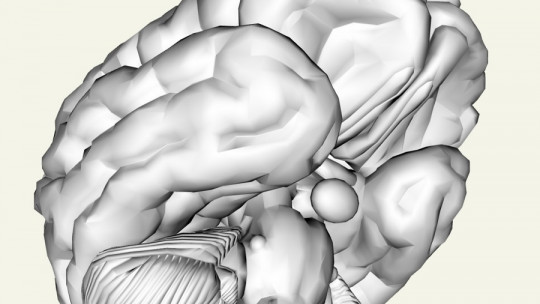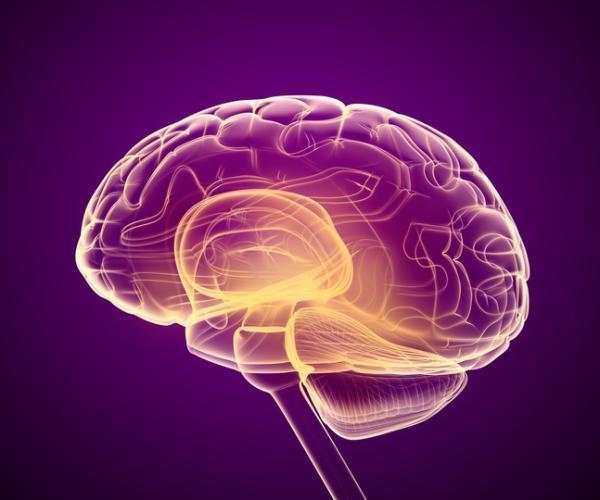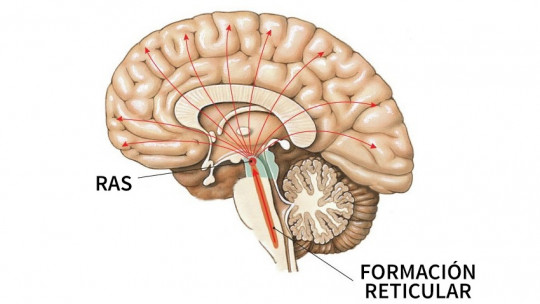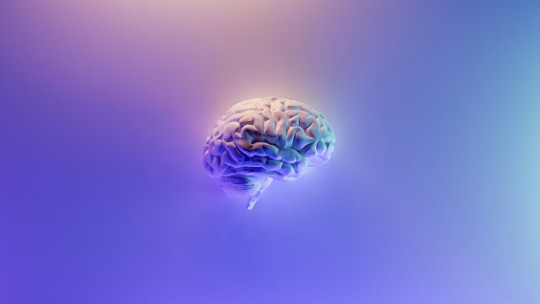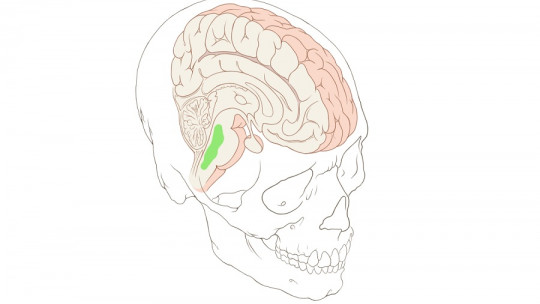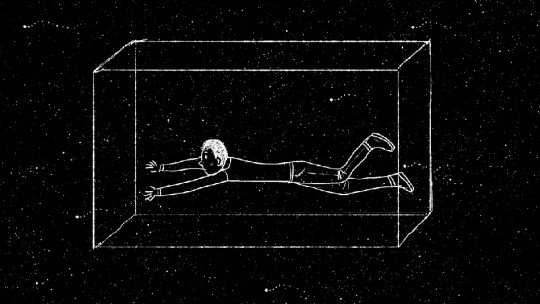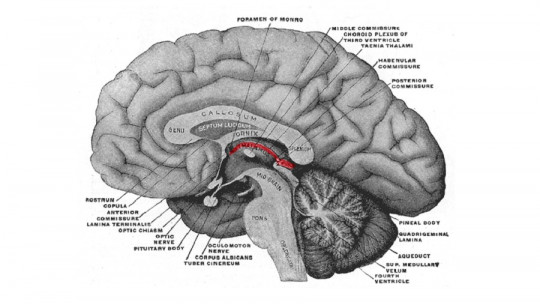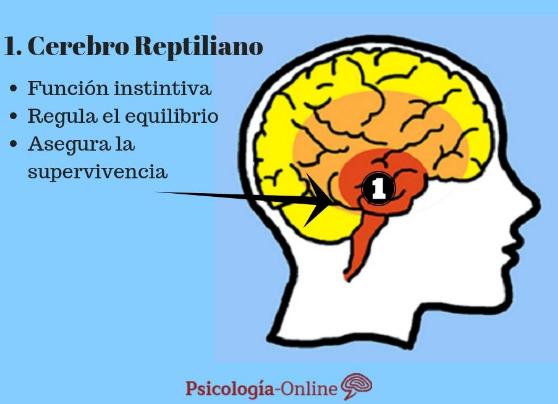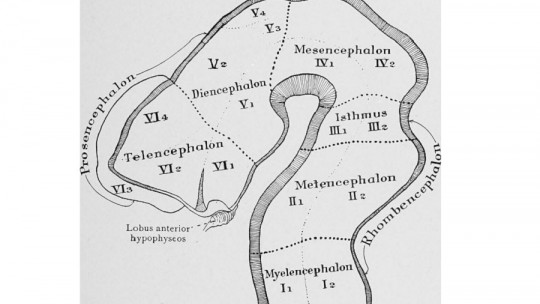The reticular formation is a brain system that is involved in many functions, all of them fundamental for our survival and proper functioning.
It is made up of two subsystems, one of them being the ascending activating reticular system, a multinucleus circuit which is involved in wakefulness, attention and sleep-wake changes.
This fascinating set of nuclei is what makes us pay attention and, in fact, it is one of the areas that are activated right now as we read this article. Let’s discover more about such an interesting system.
What is the ascending activating reticular system?
The ascending reticular activating system or RAAS, known simply as the ascending reticular activating system or ARAS, is one of the two major subunits of the reticular formation
The reticular formation consists of a series of interconnected nuclei found throughout the brain stem. The RAAS is found together with the other subsystem, which are the descending pathways that go to the spinal cord, via the reticulospinal tracts.
The ascending reticular activating system is a fundamental part of the vertebrate nervous system, since it It is responsible for the regulation of wakefulness and sleep-wake transitions This structure is mostly composed of nuclei in the thalamus and a significant number of dopaminergic, noradrenergic, serotonergic, histaminergic, cholinergic and glutamatergic brain nuclei.
Structure and parts
The ascending reticular activating system is made up of several circuits that connect the dorsal part of the posterior midbrain (midbrain) and anterior part of the brainstem or Varolio pons. These circuits are directed to the cerebral cortex through different pathways that project through the thalamus and hypothalamus
As a whole, the RAAS is composed of more than 20 nuclei on each side of the upper brain stem, pons, medulla, and posterior hypothalamus. These neurons release different transmitters, among which we can find dopamine, norepinephrine, serotonin, histamine, acetylcholine and glutamate These neurons exert influence at the cortical level thanks to direct and indirect axonal projections through links at the thalamic level.
The thalamic pathway consists mostly of cholinergic neurons in the pontine tegmentum, while the hypothalamic pathway is composed mostly of monoamine-releasing neurons. These are: dopamine, norepinephrine, serotonin and histamine.
As we have already mentioned, there are also neurons in the ascending reticular activating system that release glutamate. These neurons were identified relatively recently, and have been related to the monoaminergic and cholinergic nuclei. The glutamatergic component of the RAAS includes one nucleus in the hypothalamus and several in the brainstem.
Next we are going to go into more detail about which parts make up each of the nuclei specialized in a different type of neurotransmitters.
1. Dopaminergic nuclei
We have dopaminergic nuclei in the ventral tegmental area and in the pars Compacta of the substantia nigra.
2. Noradrenergic nuclei
Among the noradrenergic nuclei we have the Locus coeruleus and noradrenergic nuclei of the brain stem.
3. Serotonergic nuclei
The serotonergic nuclei are the dorsal and medial raphe nuclei.
4. Histaminergic nucleus
The histaminergic nucleus is the tuberomammillary nucleus.
5. Cholinergic nuclei
Among the cholinergic nuclei we have the cholinergic nuclei of the forebrain and the nuclei of the pontine tegmentum, specifically the laterodorsal and pedunculopontine nuclei
6. Glutamatergic nuclei
At the level of the brainstem we have the parabrachial nucleus, the precoeruleus and the tegmental pedunculopontine nucleus. Regarding the thalamic level, we have the supramammillary nucleus.
7. Thalamic nuclei
In the thalamus we have the thalamic reticular nucleus and the intralaminar nucleus, which includes the centromedian nucleus.
Features
The ascending activating reticular system is a very important network of nuclei, given that Its functions are of vital importance for the body to remain active and be aware of its operation.
1. Awareness
Consciousness, understood in the sense of being aware of one’s state, of one’s existence is a human and other animal capacity due to the functioning of the RAAS.
2. Regulation of sleep-wake transitions
The ascending reticular activating system is responsible for the physiological changes from deep sleep to wakefulness transitions that are reversible and necessary for the organism.
The ventrolateral preoptic nucleus of the hypothalamus inhibits the neural circuits responsible for the state of wakefulness. When this same nucleus is activated it causes the sleep state to occur.
During sleep, RAAS neurons have a lower firing rate, while it is higher when you are awake. In order to enter deep sleep, it is necessary to reduce the ascending afferent activity that reaches the cortex, something that occurs due to suppression of the ascending reticular system.
3. Attention
The ascending activating reticular system also intervenes in transitions from a state of relaxed and distracted consciousness to periods of high attention
This occurs due to an increase in blood flow in the regions where the nuclei of this subsystem are located, blood flow which indicates that there is an increase in neuronal activity, in the reticular formation of the midbrain and the intralaminar nuclei of the thalamus.
Clinical importance
Knowing the functions that we have just seen, it is possible to understand the great clinical importance of the ascending activating reticular system, especially when massive lesions occur in the system. Damage to this set of nuclei can cause states of reduced consciousness such as coma or brain death, in addition to absolute death.
Regarding pathologies, we can highlight that The RAAS is mainly affected by age As we age, this set of nuclei deteriorates and its neuronal activity becomes more dysfunctional. Among the diseases that affect this system we can highlight the following:
Narcolepsy
narcolepsy It can occur due to lesions in the pedunculopontine and laterodorsal tegmental nuclei In these nuclei there is a downregulation of the activation of their neurons, in addition to a loss of orexin peptides, causing the characteristic daytime sleepiness of the disease to occur.
Parkinson’s disease
Parkinson’s disease is a medical condition that affects the brain, especially in terms of dopaminergic production However, the cholinergic nuclei are also affected. It should be noted that the RAAS is one of the systems that is most damaged when the disease appears.

